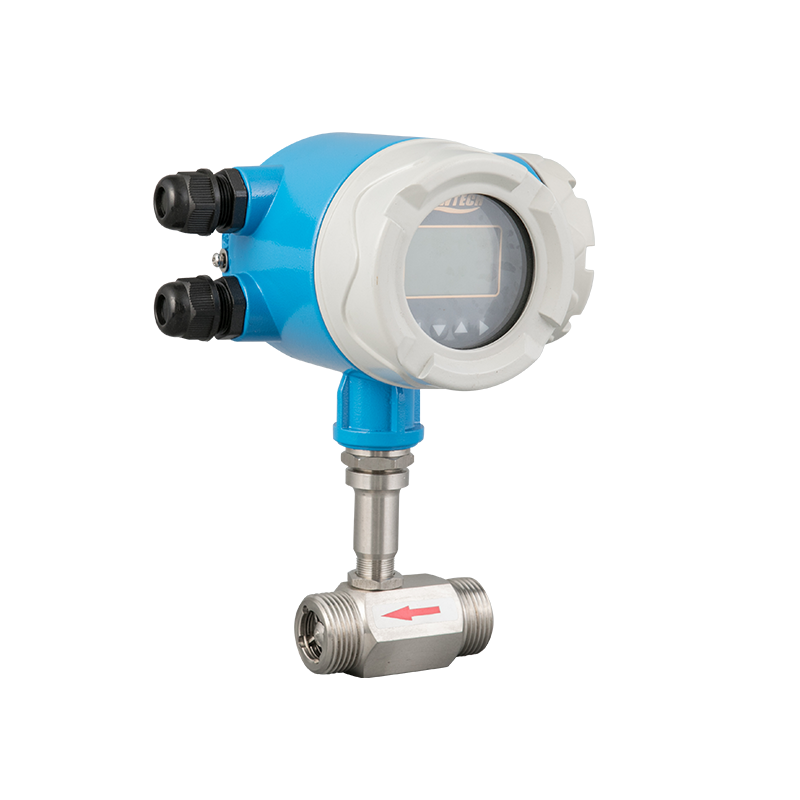Flow meters are widely used in the measurement and control of sewage flow, pharmaceutical dosage, air flow control, etc. The commonly used flow meters in sewage treatment engineering mainly include rotameter, turbine flowmeter, electromagnetic flowmeter, ultrasonic flowmeter and weir groove, etc.
1. Electromagnetic flowmeter
Electromagnetic flowmeter is a flow measuring instrument based on the principle of electromagnetic induction. It can be used to measure the volume flow of conductive liquids. There is almost no pressure loss in the transmitter, and there are no moving parts inside. Coating or lining can easily solve the problem of measuring the flow of corrosive media. During the detection process, it is not affected by the temperature, pressure, density, viscosity and flow state of the measured medium, and there is no measurement hysteresis.
2. Vortex flowmeter
The vortex flowmeter can be used to measure the flow of liquids and gases. The stress vortex flow sensor is based on the Karman vortex principle. A holding part is provided in the flow tube. When the fluid flows through the stagnant part, due to the stagnant effect on the surface of the stagnant part and other reasons, two rows of asymmetric vortices will appear downstream of the stagnant part. These vortices separate behind the reserved part, forming a so-called Karman vortex, and the two rows of vortices rotate in opposite directions. The flow state of the fluid also has a certain influence on the use of the vortex flowmeter. If the environmental parameters affect the flow status, the performance of the vortex flowmeter will also be affected.
3. Rotameter
Rotameter, also known as rotameter, is widely used in electric power, petrochemical, chemical, metallurgical, pharmaceutical and other process industries, sewage treatment and other utilities. As an on-site indicator, it has intuitive flow indication or low measurement accuracy requirements. It can measure the flow of liquid, gas and steam. The pressure loss is small and constant, the measurement range is wide, the range ratio is 1:10, the work is reliable, the scale is linear, the use and maintenance are convenient, the length of the straight pipe before and after the instrument is not high, but the measurement accuracy is about the density of the measured liquid ±2% of the influence of viscosity, purity, temperature and pressure, and installation verticality.
4. Throttle flowmeter
The liquid filled with the pipeline flows through the throttling device in the pipeline, and the flow beam forms a partial contraction in the throttling part, which increases the flow rate and reduces the static pressure. There is a static pressure difference before and after the throttling part. The greater the fluid flow, the greater the pressure difference generated before and after the throttle, and the flow can be measured by measuring the pressure difference.
5. Ultrasonic flowmeter
Ultrasonic flowmeter is a non-contact flowmeter. The working principle of the ultrasonic flowmeter is that the propagation speed of ultrasonic waves in the fluid is affected by the speed of the medium. By measuring the propagation velocity of ultrasonic waves in the fluid, the velocity of the fluid can be measured and the flow rate of the fluid can be calculated.
6. Ultrasonic open channel flowmeter
Ultrasonic open channel flowmeters and measuring weirs are used to measure the river sewage flow under free flow conditions. When the instrument is working, the sensor is not in contact with the measured fluid, which avoids pollution and corrosion of sewage in the pipeline. It can be used for the measurement of sewage flow and has high reliability.
www.kio-tech.com







 English
English 中文简体
中文简体 русский
русский España
España